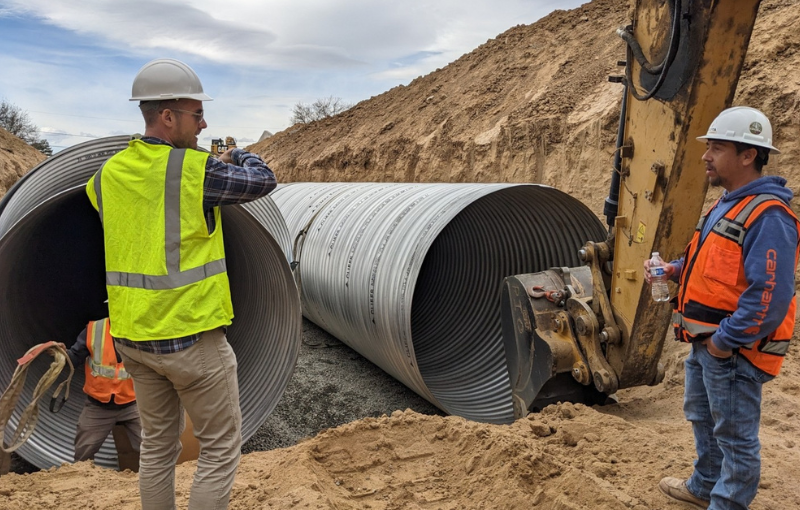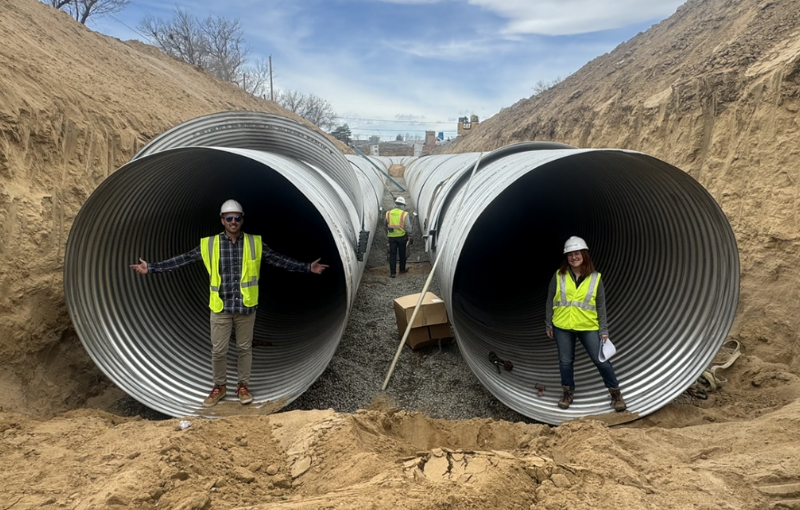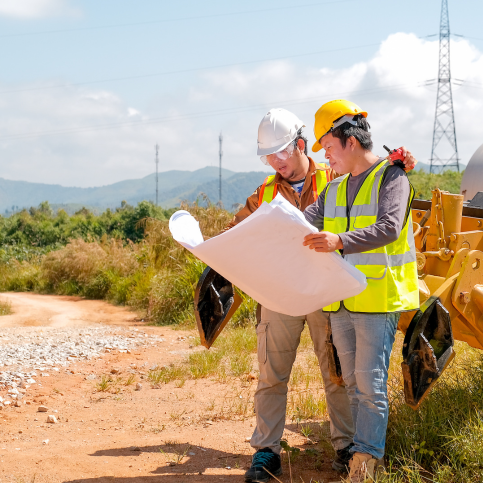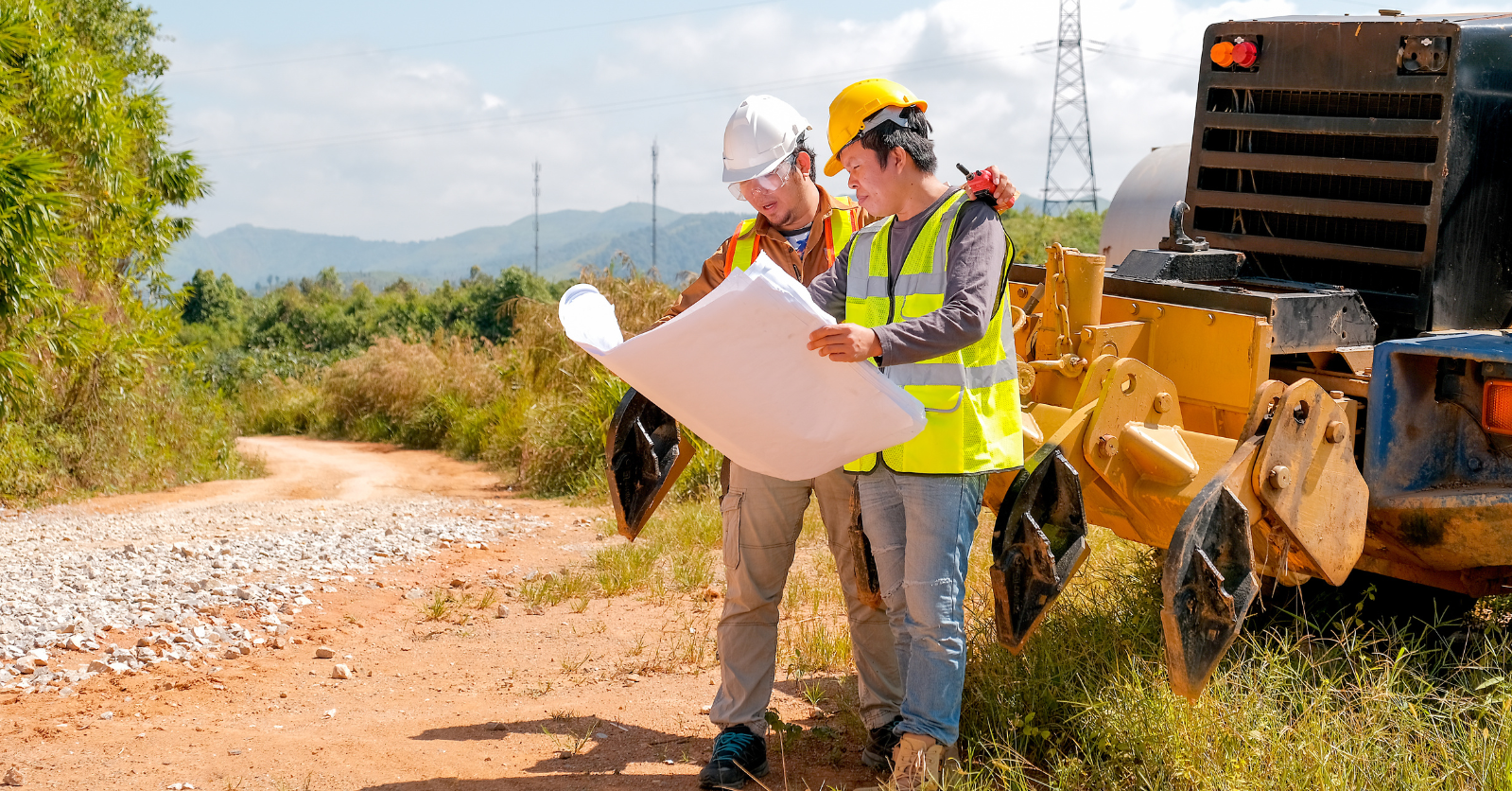Ensuring that our land development projects do not have a negative impact on stormwater downstream is a vital part of our civil scope on most land development projects. This is traditionally achieved with at-grade ponds that control the outflow of water at or below historic flow rates. However, as urban areas become denser, traditional at-grade ponds can pose challenges to the community and are often not feasible.
To showcase the benefits of underground detention, we explore a recent project by our civil engineering teams, where creative solutions were employed to address stormwater management issues while facilitating the development of affordable housing.

Civil engineering discussing placement of detention pipes
Challenges and Objectives
The site, located in a Denver suburb, is close to essential amenities such as an elementary school, hospital, VA, and light rail station, making it an ideal location for affordable housing. However, our team discovered that not only would we need to treat and detain storm flows from our own dense development, but also flows from other parts of this neighborhood that were tributary to the site due to the steep grades and lack of adequate public infrastructure. We also needed to protect low-lying homes downstream. The narrow shape of the lot and steeply sloped terrain posed a significant obstacle, and we quickly found that providing enough at-grade detention onsite would either eliminate 25% of the proposed housing or nix the planned community center that would provide much-needed resources to the area. Balancing stormwater management requirements with the goal of maximizing housing units and community resources was paramount for the community.
Innovative Solution: Underground Stormwater Storage
To overcome these challenges, the team collaborated with the property owners and sought a variance from the jurisdiction to propose underground detention. While underground solutions are common in other parts of the country, systems like these are only just beginning to gain traction in the fast-growing Denver Metro Area
This system would not only meet regulatory requirements but also preserve the planned housing units and community center.
Implementation and Design Details
The design of the underground stormwater storage system involved the installation of two 250-foot-long, 8-foot diameter pipes. These pipes were strategically placed beneath the proposed parking lot and fire lane, minimizing impact on the proposed building footprints while efficiently managing stormwater runoff. Visiting the construction site, the team witnessed the scale of the project firsthand, reaffirming the value it would bring to the community.

Civil engineering team with detention pipes
Benefits and Impact
While underground storm detention may not always be the most cost-effective solution, its long-term benefits outweigh the initial investment. By opting for this approach, the project not only preserved housing units and community resources but also ensured the protection of low-lying homes downstream and improved stormwater management for the neighborhood. The success of this project demonstrates the importance of creativity and collaboration in addressing complex urban challenges. By prioritizing the community, thinking outside the box, working closely with stakeholders, our team was able to achieve a balance between development goals and environmental stewardship. As urbanization continues to intensify, embracing such innovative approaches will be crucial in creating sustainable and resilient communities.
Ware Malcomb’s land development civil engineering teams across the Americas have extensive experience with stormwater management and creative solutions to fit land development goals. We help guide and inform clients about when and why it is appropriate to implement underground vs. above ground solutions to maximize the long-term real estate value of properties.
To learn more about our civil engineering experience:


